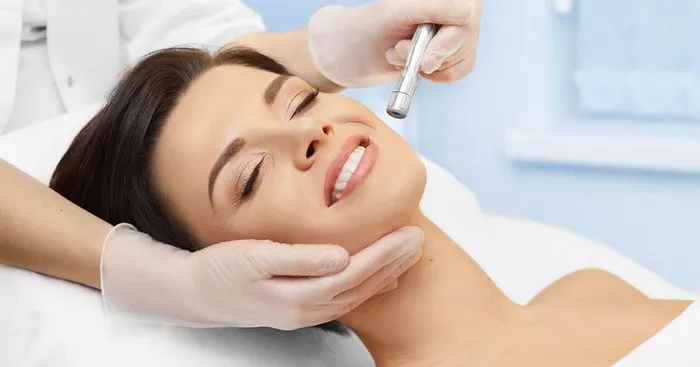Microdermabrasion has gained popularity as a non-invasive cosmetic procedure aimed at rejuvenating the skin’s appearance. Among the various skin imperfections it claims to address, brown spots, often associated with sun damage or aging, stand out as a common concern for many individuals. This article will explore the effectiveness of microdermabrasion in removing brown spots and provide insights into its benefits, considerations, and alternatives.
Understanding Brown Spots
Before delving into the role of microdermabrasion in treating brown spots, it is crucial to understand what they are. Brown spots, also known as hyperpigmentation, occur when the skin produces excess melanin, the pigment responsible for skin, hair, and eye color. Factors such as sun exposure, hormonal changes, genetics, and aging can trigger melanin overproduction, leading to the formation of these unsightly spots.
How Microdermabrasion Works
Microdermabrasion is a minimally invasive exfoliation procedure that involves the removal of the top layer of skin, known as the stratum corneum, using a specialized tool. This process stimulates the skin’s natural healing response, promoting the growth of new, healthier skin cells. While microdermabrasion primarily targets skin texture and mild pigmentation issues, its effect on brown spots varies depending on the depth and severity of the spots.
Microdermabrasion and Brown Spots
Superficial Brown Spots: Microdermabrasion is most effective in treating superficial brown spots or those located in the epidermis, the outermost layer of the skin. By gently exfoliating this layer, the procedure can help reduce the appearance of these spots over time.
Limited Effect on Deep Brown Spots: However, when brown spots extend into the deeper layers of the skin, such as the dermis, microdermabrasion may have limited effectiveness. This is because the procedure primarily targets the surface layers and may not penetrate deep enough to reach the pigmented cells causing the spots.
Multiple Sessions Required: Achieving noticeable results typically requires multiple microdermabrasion sessions spaced a few weeks apart. The number of sessions needed depends on the individual’s skin type, the severity of the brown spots, and their desired outcome.
Mild Discomfort and Downtime: Microdermabrasion is generally considered a comfortable procedure, often described as feeling like a gentle scratching or vibrating sensation. There is minimal downtime, with most individuals able to resume their regular activities immediately after treatment.
Benefits of Microdermabrasion
Apart from its potential to reduce the appearance of brown spots, microdermabrasion offers several other benefits:
Improved Skin Texture: Microdermabrasion exfoliates the skin, leading to smoother and softer skin texture.
Reduced Fine Lines and Wrinkles: The procedure can diminish the appearance of fine lines and wrinkles, giving the skin a more youthful look.
Enhanced Absorption of Skincare Products: By removing the outer layer of dead skin cells, microdermabrasion allows skincare products to penetrate more effectively, increasing their efficacy.
Minimal Side Effects: Microdermabrasion is generally safe, with minimal side effects such as temporary redness or mild sensitivity.
Considerations and Alternatives
While microdermabrasion can be effective for certain types of brown spots, it may not be suitable for everyone. Individuals with deep or extensive pigmentation issues may find better results with alternative treatments, including:
Chemical Peels: Chemical peels use acid solutions to exfoliate the skin and can be tailored to address specific pigmentation concerns.
Laser Therapy: Laser treatments, such as intense pulsed light (IPL) or fractional laser therapy, can target deeper pigmentation issues and offer more precise control.
Topical Products: Over-the-counter and prescription-strength skincare products containing ingredients like hydroquinone, retinoids, and alpha hydroxy acids can help fade brown spots gradually.
Sun Protection: Preventing further brown spot formation requires diligent sun protection, including wearing sunscreen and protective clothing.
Conclusion
Microdermabrasion can be an effective option for individuals looking to reduce the appearance of superficial brown spots and improve overall skin texture. However, its effectiveness may vary depending on the depth and severity of the pigmentation issue. Before undergoing microdermabrasion or any other skin treatment, it is essential to consult with a qualified dermatologist or skincare professional who can assess your specific needs and recommend the most appropriate approach to achieve your desired results. Remember that a comprehensive skincare routine, including sun protection, plays a crucial role in maintaining healthy, spot-free skin.

